
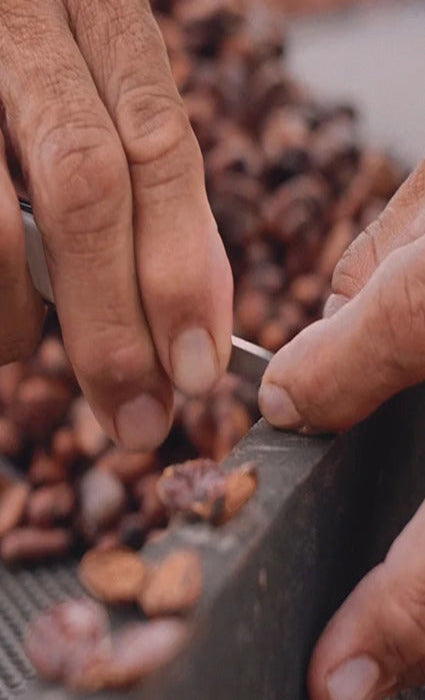
We believe in sourcing the finest ingredients and working directly with cocoa farmers to ensure the highest quality but also fair conditions. Since we know our farmers and are responsible for the whole production from bean to chocolate we can ensure not only finest ingredients, but also a careful processing and creation of truly fresh Swiss chocolate. Read below to discover where our cacao is from and how we turn cacao beans into finest Swiss couverture and chocolate creations.

Step 1
Sourcing the finest cacao
Anyone looking to make the best chocolate first has to look for the best cocoa. And this can be found by travelling to the cocoa farm where it is produced. Läderach meets farmers and their families on a regular basis. They live in Trinidad, Ecuador, Brazil, Madagascar, Ghana and they share our passion: Making some of the world`s best chocolate.

Step 2
Processing Cacao
Before cocoa beans arrive at our manufactury in Switzerland, our farmers need to follow several crucial steps to ensure high-quality cacao. Read below what happens once it is harvested.
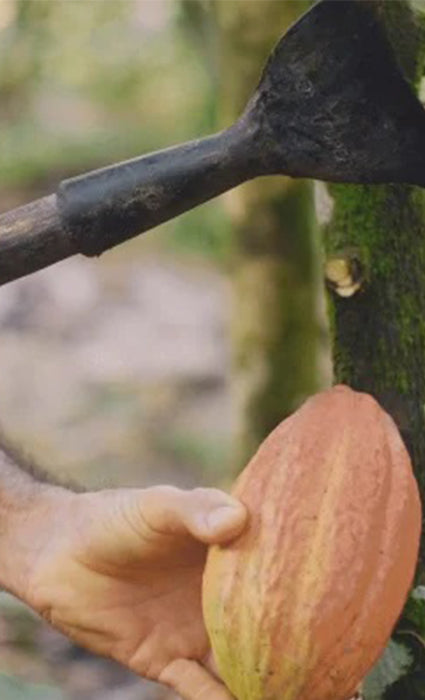
1. Harvest
Cocoa grows around the equator mainly in West Africa and in Central and South America. The colorful pods grow directly at the trunk or stronger branches of the tree. The pod is cut from the tree by razor-sharp blades, mostly on long wooden sticks, twice a year – by hand.

2. Slice open
Two or three hard hits are needed to open the pod with a machete. The beans inside are surrounded by a white, jelly-like, sweet and sour pulp like a lychee. The beans inside will be removed immediately and collected in separate pots

3. Fermentation
The fermentation process lasts about four to eight days, during which the cocoa beans develop their unique flavor, and bad odors vanish. Fermentation varies depending on the bean type; Forastero beans require about five days and Criollo beans two to three days

4. Drying
Cocoa beans are dried after fermentation to reduce the moisture content from about 60% to about 7.5%. Drying must be carried out carefully to ensure that flavors are developed properly. The beans are then dried in the sun

5. Fill up
Once dried, the beans are checked once more in terms of quality, sorted by quality and size and filled into jute sacks to be sent on their long journey to Läderach in Switzerland.

Step 3
Making chocolate
When the cacao beans arrive at our manufactury, the magic of creating the "couverture", a high-quality chocolate, can begin.

1. Quality Control
Once they arrive at Läderach in Switzerland, our beans' quality is again thoroughly tested and checked. Every delivery is tested in our laboratory to ensure the best quality for our Läderach chocolate.

2. Cleaning
The jute sacks are cut open, and the cocoa beans pass through a multi-stage washing system. This ensures that any dust, sand or bits of shells are removed.
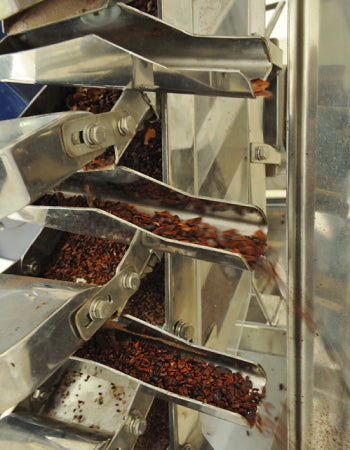
3. Peel & Use
Thanks to the heat of an infrared drum, the shell of the cocoa bean can be cracked more easily. In terms of sustainability, we collect the cocoa bean shells and give them to local farmers, as they are a perfect fertiliser.

4. Breaking & Roasting
As a next step the beans are crushed into little pieces called nibs. Nibs are small fragments of raw cocoa, which are then ground to obtain cocoa mass. By gently roasting the nibs, the cocoa beans’ fine aromas are released.

5. Grinding & mixing
Grinding the nibs results in cocoa butter being released. Mixing cocoa butter and ground cocoa together using heat will result in a liquid cocoa mass. The ingredients for a basic chocolate are mixed together into a homogenous mass in a batch mixer

6. Rolling & Conching
This liquid cocoa mass is passed in a roller mill to make a fine chocolate powder, which is then filled into the conche. The powder is then thoroughly kneaded and mixed with cocoa butter. This removes any unwanted bitter and tart notes from the chocolate.

7. Fresh Swiss Chocolate
Finally we have chocolate or so-called “couverture”. Now we can add nuts, berries, honey and other ingredients to create FrischSchoggi, pralines or other delights.

Step 4
Creations
The sky`s the limit when it comes to our chocolatiers` creativity.
Read below how couverture is turned into fine chocolate creations.

1. Tempring
Läderach chocolatiers carefully heat the chocolate and cool it down again. This process results in a nicely cracking, shiny chocolate. This is an unmistakable sign of high-quality chocolate.

2. Ingredients
Now the moment has come to add ingredients or create fillings. The caramelized Piemonte hazelnuts or marzipan, cream etc. are mixed to delicious, delighting fillings for pralinés or truffles.
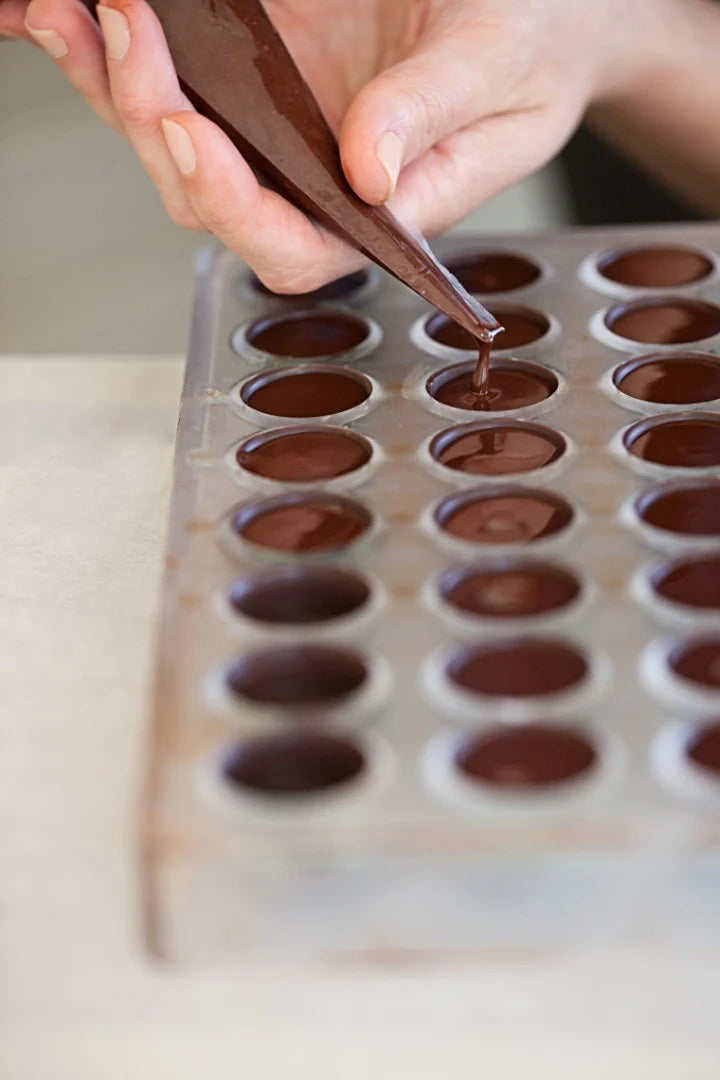
3. Filling the Truffles
Hollow chocolate shells (invented by Läderach) can be filled with truffle cream or other delicious options. As a finishing touch, they are dipped in chocolate again.
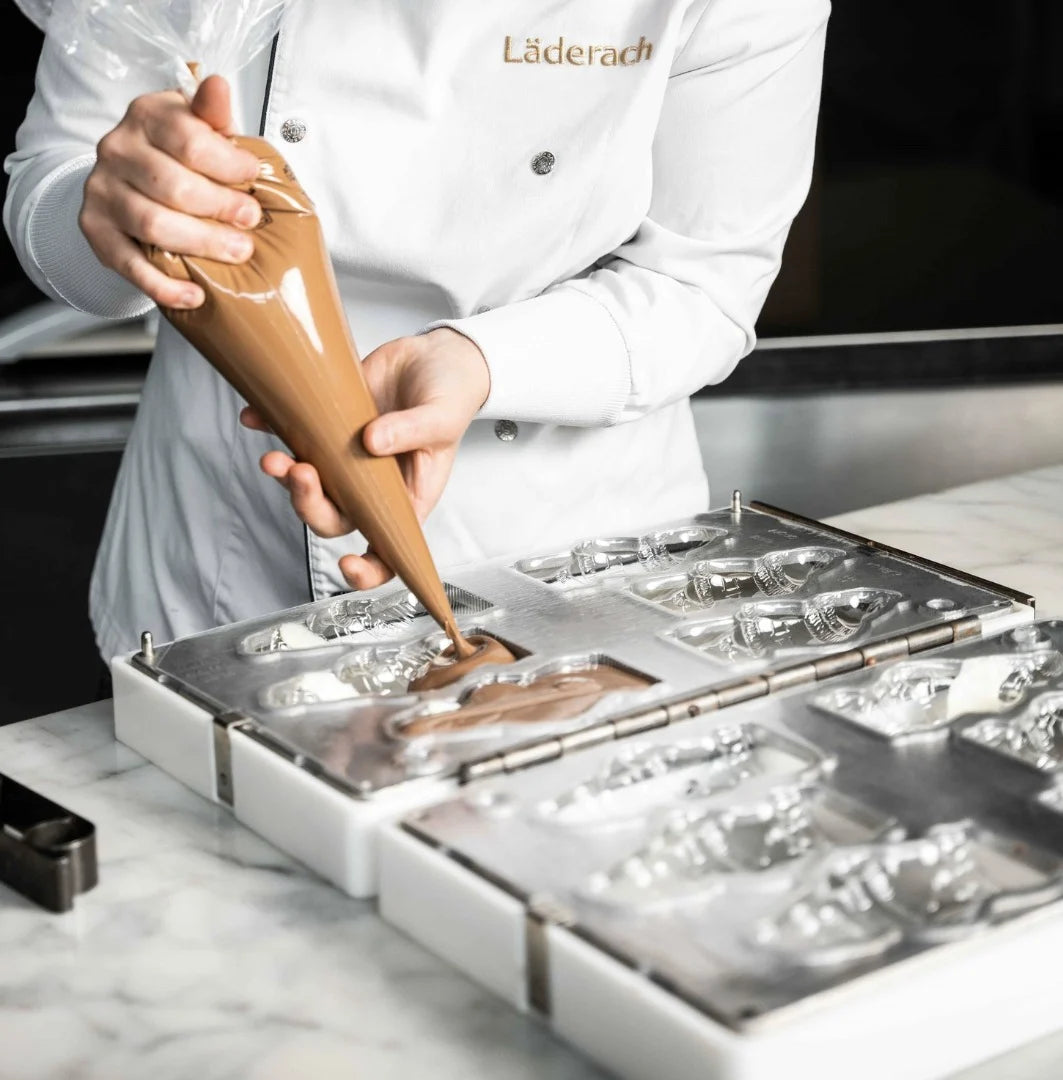
4. Chocolate Figures
These creations are decorated with extra details such as ribbons or hand-drawn features.















